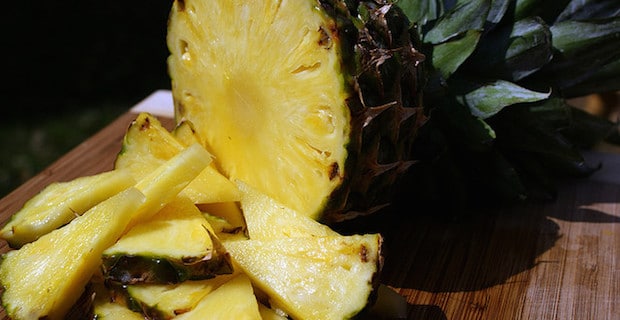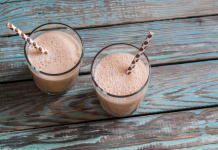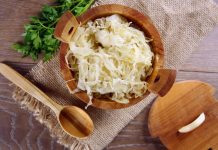
Inflammation is designed to protect us. It’s the body’s primary and normal response to injury or infection. Sometimes, however, the inflammatory process is triggered inappropriately. In autoimmune disease, for example, the body's normally protective immune system damages its own tissues, erroneously recognizing normal tissues and substances (like peanut butter) as foreign.
NSAIDs (non-steroidal anti-inflammatory drugs) like aspirin and ibuprofen are often prescribed to treat pain for inflammatory conditions like arthritis. NSAIDs block cyclooxygenase (COX), an enzyme abundant in cells at sites of inflammation, but side effects can include stomach bleeding, kidney and intestinal damage. For those seeking alternatives, food – the building blocks of our cells – can have a profound effect on inflammation.
Julie Daniluk, Registered Holistic Nutritionist, author of Meals That Heal Inflammation: Embrace Healthy Living and Eliminate Pain, One Meal at at Time , and host of television’s Healthy Gourmet explains the impact that diet can have on the inflammatory process:
Lisa Tsakos: Can diet impact inflammation?
Julie Daniluk: Absolutely. Food becomes the building blocks of your body so you can provide powerful healing or create inflammation depending on your choices. People may have food sensitivities that make their inflammatory condition worse. People are not the same, though, so there is only the process of elimination that will help determine which food is causing the sensitivity. The Meals That Heal Inflammation Plan takes people through a 10 week program to help them discover which foods may be causing pain and replaces them with healing tasty meal options.
Lisa Tsakos: Which inflammatory conditions respond the fastest to dietary changes?
Julie Daniluk: All inflammatory conditions will improve but the most marked changes are with digestive disorders such as IBS (Irritable Bowel Syndrome), skin disorders such as eczema and joint conditions such as gout and arthritis.
Lisa Tsakos: What are the best anti-inflammatory foods?
Julie Daniluk: Cold-water fish like salmon, anchovies, mackerel and sardines are an excellent source of eicosapentaenoic acids and docosahexaenoic acids, the two potent omega-3 fatty acids that can dramatically reduce inflammation.
Read more about omega-3 and omega-6 fatty acids and inflammation
The spice turmeric contains a powerful, non-toxic compound called curcumin. Studies found that turmeric’s anti-inflammatory effects are on par with potent drugs such as hydrocortisone yet having none of the side effects. Ginger is a relative of turmeric that is also prized around the world for its anti-inflammatory benefits, and is used to expel cold and relieve motion sickness and vomiting.
Papaya and pineapple possess powerful enzymes that reduce inflammation. Christopher Columbus’ ‘fruit of the angels’, papaya, contains papain, a protein-digesting enzyme. Together with other nutrients such as vitamin C and E, papain helps to reduce inflammation, and improves digestion and healing from burns. Pineapple, a tropical fruit worthy of mention, contains bromelain, an enzyme that aids in the healing of indigestion, sports injury, trauma, arthritis, and other kinds of swelling.
Berries are antioxidant powerhouses that provide anti-inflammatory protection against many diseases such as cancer and dementia. Enjoy feasting on organic blackberries, blueberries, cranberries, currents, raspberries and mulberries. If you suffer from Inflammatory Bowel Disease, be sure to strain out the seeds to avoid discomfort.
Lisa Tsakos: Can you point to the top foods and ingredients to avoid for general inflammation?
Julie Daniluk: Avoid fatty meats and high fat cheeses such as ribs, bacon, lamb, duck, goose, sausages, hamburger, hot-dogs, cheddar, brie, and cream cheese. These high fat animal foods contain saturated fats and are loaded with arachidonic acid, which is one of most dangerous inflammation-causing fats when consumed in excess.
Avoid most cooking and salad dressing oils, shortening and refined baked goods including all vegetable shortening, all margarines, all corn oils, safflower, peanut, and other vegetable cooking and salad oils. These products almost always contain rancid oil and trans fatty acids that are dangerous to your health.
Avoid fried foods are cooking at high temperatures. When oil is heated to a high temperature, it is damaged, creating toxins that are very destructive to our health. It is best to bake, boil or steam food and add oils as dressings after the food is cooked to protect yourself.
Lisa Tsakos: What are the top foods and ingredients to include and avoid for someone with arthritis?
Julie Daniluk: With arthritis, it is extra important to check if you are sensitive to nightshade vegetables such as tomatoes, white potatoes, red and green bell peppers, the "hot" peppers such as chili and paprika, as well as eggplant. Nightshades contain high levels of alkaloids such as solanine, which cause the bones to excrete calcium and trace elements from the body.
Lisa Tsakos: What about heart disease?
Julie Daniluk: Add a bit of avocado to a sandwich or spinach salad to increase the amount of heart healthy fats in your diet. Packed with monounsaturated fat, avocados can help lower LDL levels while raising the amount of HDL cholesterol in your body. Walnuts are full of omega-3 fatty acids and, along with almonds and macadamia nuts, are loaded with mono- and polyunsaturated fats that have been shown to reduce heart disease. A big bonus is that nuts increase fiber in the diet, which helps to lower cholesterol in the blood. Spinach can help keep your ticker healthy because of it’s heart protective nutrients lutein, folate, potassium, and fiber.
Lisa Tsakos: Will this approach work for someone with a longstanding inflammatory condition (like a strained muscle that didn’t heal properly)?
Julie Daniluk: If you have an old injury, you must seek physical therapy to completely heal. The diet can help but many people create negative posture to cope with the injury. Pilates, rehabilitation, personal training and physiotherapy can help to create awareness of new movement patterns that will create amazing results when combined with the anti-inflammatory plan.
Read more about tips to help soothe nagging pains
Lisa Tsakos: Do you advise CRP testing first to determine the degree of inflammation?
Julie Daniluk: Yes. The CRP test measures the levels of C-reactive protein, a protein that your body makes when there is inflammation. Higher CRP levels are linked to an increased risk of heart disease and its complications, such as heart attacks, strokes, and hardening of the arteries in the legs, which causes leg cramps and poor circulation.
Lisa Tsakos: Will the dietary approach change depending on the results?
Julie Daniluk: Yes. There are 6 billion diets for 6 billion people on the planet. Everyone is such an individual that we have to discover what works in each person. The Meals That Heal Inflammation Program helps people discover their own plan that can change over time as they improve their health and their taste buds begin to enjoy natural flavors!
For more information about inflammation visit juliedaniluk.com.
Image: Kyle McDonald










